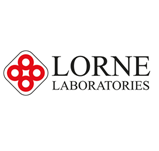What is enzyme immunoassay, and how does it work?
5 March 2015

Enzyme immunoassay (EIA) is now widely used as a diagnostic tool in various industries as well as medicine. They can also be used as analytical tools for detecting particular antigens or antibodies in a certain sample during biomedical research.
The history
A Nobel Prize was awarded for prior work, on which EIA is based, which used the same basics principles as EIA now uses. This early procedure was known as radioimmunoassay, which was developed as a new way to detect and measure small amounts of certain biological molecules. However, there were fears about the use of radioactivity in the procedure, so a radioactive isotope was replaced by an enzyme instead.
How does an enzyme immunoassay (EIA) test work?
During EIA the process uses enzyme labelled antibodies and antigens to detect the small biological molecules required. The technique makes use of the basic immunology concept that an antigen binds a specific antibody. Such antigen molecules, which can be identified in a fluid sample, include molecules such as peptides, hormones and proteins. The enzymes which are commonly used in this process include glucose oxidase and alkaline phosphase. The antigen in the fluid is allowed to bind to a particular antibody which is then detected with another enzyme-coupled antibody. A particular colour change occurs or fluorescence which indicates the presence of the antigen. The amount of the particular biological molecule, which is being looked for and is present in the sample, is based on the colour or fluorescence observed.
EIA Techniques and Procedures
There are several methods which are used to detect very low concentrations of the biological molecules including the ‘indirect and ‘sandwich’ techniques. In addition, the enzyme immunoassay technique has been refined into a low cost and portable EIA kit which can be used for a large population in places with low resources. Currently, as well as many benefits of the technique, there are also several limitations. In the solution, which contains the enzyme related colour change, the strength of the colour can change and doesn’t always accurately reflect the amount of antibody in the test fluid. This can occurs when the solution has been left for a long period of time and may result in some false positive tests. In addition, there are other particular circumstances which may also yield false positive results which can pose a potential problem.
Our team can help assist you if you have any questions surrounding the enzyme immunoassay technique. E-mail us at info@lornelabs.com for further information and we will be happy to help. The enzyme immunoassay technique has also been refined into a low cost and portable EIA kit.
< Back to blog list
Share




